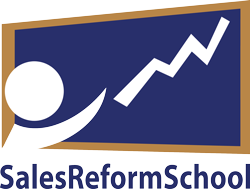In addition to coaching, consulting, and facilitating, I
spent part of last week attending two networking events aimed at sales and
marketing professionals. Monday,
the Atlanta
Chapter of the Sales and Marketing Executives International hosted Jeffrey Hayzlett for an evening
presentation. Wednesday, Anneke Seley spoke to
the Atlanta
Chapter of the American Association of Inside Sales Professionals. Channeling Jessica Stein, I let the
lessons presented “marinate” for a while.
Sometimes these events are boring and potentially only
valuable for the drinks, hors d'oeuvres and networking with other
professionals. I try to bring the
same ear to these events as when I listen to a color commentator during a
televised ballgame. Is the speaker
telling me anything I did not know?
Is theirs a perspective I have not considered? Would my clients gain
from my note taking? Thankfully, Yes, Yes, and Yes.
My thoughts and notes below.
Hayzlett, now former Chief Marketing Officer at Eastman
Kodak, has penned The
Mirror Test, a book asking whether the reader’s business “is really
breathing?” Find a Q & A here
on Hayzlett.
He’s a very entertaining, physical speaker – he’s a large
man – who certainly knows how to work a room. I was impressed by his ability to connect with his audience
and maintain his energy. Perhaps
this is some insight into why he performed so well on Celebrity Apprentice. I was a bit disappointed that he
started out talking about a worn-out sales and marketing tool – the elevator
pitch. He does, however, have an
interesting spin on it: According
to Hayzlett, “It’s 118 seconds, because eight seconds is the average attention
span of an adult, and 110 seconds is the average elevator ride. So, you got
eight seconds to hook me, and 110 seconds to sell me.” So, here’s something we can
practice. Eight seconds is long
enough to generate interest; 110 definitely long enough to make sense of the
hook.
Hayzlett then described his thoughts on leadership. He said leaders set the conditions of
satisfaction. “What's the implicit promise to the customer?” Leaders make sure that promise is set,
understood, and fulfilled. Leaders,
for Hayzlett also cause tension. I’m
thinking he would agree that true leaders use stress to push their teams to
greater creativity and results.
Next, he urges leaders to be themselves letting their personality come
through. This may lead to leaders
having to be willing to get rid of those that can't keep up. A favorite saying of his seems to
be, “we love you, but we’ll miss you.” Finally, sales and marketing leaders should realize that due
to their decisions, no one is going to die. So, don’t take everything, including you, too seriously.
Especially for marketers, Hayzlett suggests the following
maxims:
1) Buzz is not sales – Marketing executives must recognize
whether the work they are doing will actually generated sales or just
buzz. Go for the former.
2) Have an operating philosophy.
For him, it’s FAST:
Focus Accountability Simplicity Trust (each other)
3) Never compete on price – not exactly original, but a
necessary reminder.
Next up was a breakfast discussion on Sales 2.0 with Anneke
Seley. Seley with Brent Holloway
wrote Sales 2.0, a guide for
deploying or re-deploying sales teams for better results. Think of it as a
primer of the combination of modern sales strategies and web 2.0. We should take notice of the Seley’s
leadership in this area: She was
employee 12 at Oracle and built the OracleDirect sales operation from scratch
into a Billion Dollar organization.
A Good
Q & A.
From my perspective, Seley is all about putting the right
resources in the right places and measuring the results. As a consultant now, she suggests the
following priorities for optimizing sales:
Strategy-Process-People-Systems.
One at a time –
1) Set your strategy. Are you a direct selling team? Indirect? What’s your go to market strategy?
2) Assemble or re-assemble your processes. What are the steps marketing and sales
will take from generating interest to closing opportunities? Which steps can
happen online or over the telephone?
Which have to be face-to-face?
3) Hire or re-deploy your people so you are
taking advantage of their best skills at the right point of your process.
4) Use technology to both enhance the
buyer-seller experience and measure results. The best Sales 2.0 companies are taking advantage of social
media technology at the front end of the buyer-seller relationship, using
virtual meeting tools during buyers’ evaluations, and measuring success through
their Customer Relationship Management tools.
After a concise summary presentation, Seley took questions
from the audience. The best had to
do with how to hire inside sales 2.0 reps. Some pearls of wisdom:
–
Of course, everyone likes experience, but Seley
stressed that her best hires were “out of the box” thinkers.
–
Have the first conversation over the phone so
you can judge the applicants voice.
–
Ask the applicant to sell you on your
company. By this time, they should
have done enough research to give some thought to how they would hold
conversations about your offering(s).
–
Most innovative question for an applicant Seley’s
heard: “Tell me ten uses for a brick.” It shows the applicants ability to think
broadly and on her feet.
–
Lastly, what was the applicants follow up? Did they write a thank you note? Try to track you down to follow
up? As a hirer, consider being a
little scarce and see what happens.
So, a good week’s worth of lessons on marketing leadership
mixed with Sales 2.0.
Good Selling!
